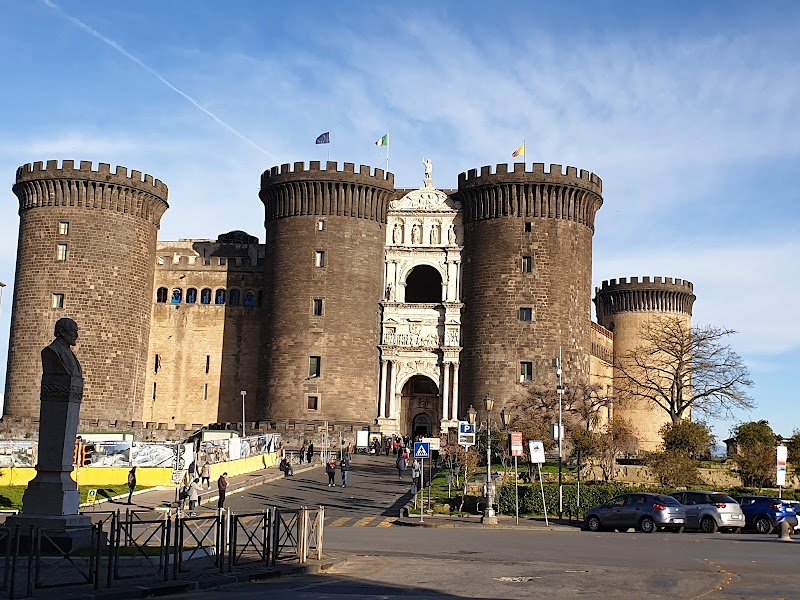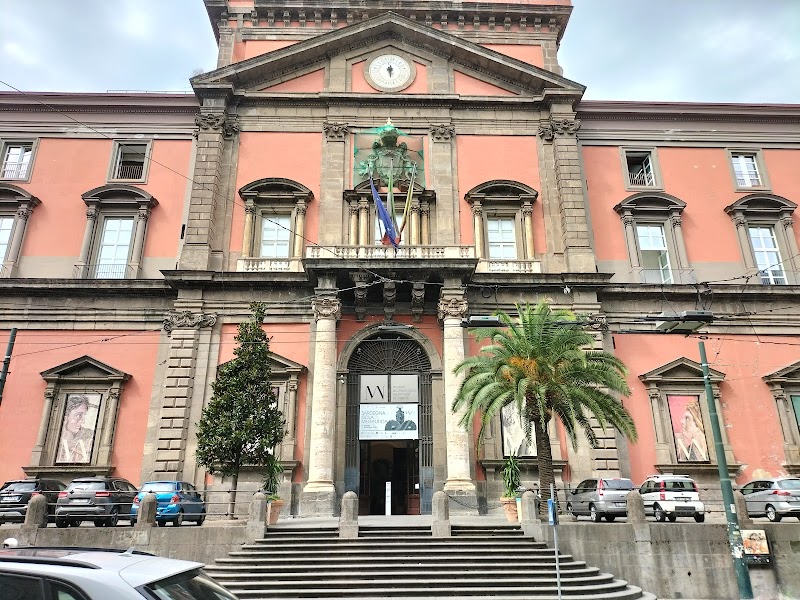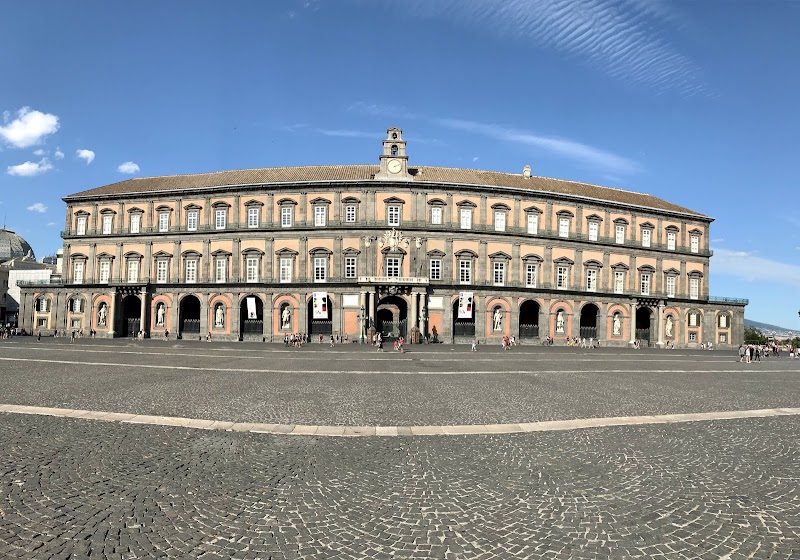Welcome to Naples, Italy's Vibrant Heart
Have you ever been to Naples, the third-largest city in Italy, known for its staggering array of over 448 historical churches, the most in the world? This city is a testament to the grandeur of Italy's past with ancient ruins like Pompeii and Herculaneum, juxtaposed against the awe-inspiring Mount Vesuvius. Ready to explore this treasure trove of cultural gems? Let's dive into the heart of Italian heritage, where every corner tells a story, springs a surprise, and offers a slice of la dolce vita.
Organizing your Naples adventure can be an exciting journey itself. Our comprehensive Tourist Map of Naples will help you navigate the city's wonders with ease. This indispensable tool guides you through the intricate streets, highlighting hidden gems and famous landmarks. With the map as your guide, you're set for an unforgettable journey, immersing in the rich tapestry of experiences that Naples unfolds.
" Booking.comDiscover the Hidden Gems of Naples
From the Tyrrhenian Sea's shores to the looming Mount Vesuvius, Naples is a city that invites exploration. Every nook and corner reveals a piece of Italy's rich history and culture. Let's uncover some of the city's most enchanting attractions that haven't been mentioned yet.
Underrated Experiences in Naples
Experience the Charm of Spaccanapoli
Cutting through the city's historic heart, Spaccanapoli is an ancient street bursting with fascinating discoveries. It's the perfect place to wander and stumble upon hidden gems, from artisan workshops to traditional pizzerias. "Spaccanapoli", translating to 'Naples splitter', aptly describes how the street bifurcates the city into two halves. Just nearby, the Tourist Map of Italy exhibits Naples' significant place in the country's cultural fabric.
Take a Step Back in Time at the Catacombs of San Gennaro
Delve beneath the city's surface and step back in time at the Catacombs of San Gennaro. This ancient burial site provides a glimpse into early Christians' spiritual life in Naples. The frescoes and mosaics adorning the walls offer insights into the city's past, and its closeness to Spaccanapoli facilitates a seamless transition between these two distinct experiences.
Experience Naples' Unique Atmosphere
The Vibrant Quartieri Spagnoli
Experience Naples' heart in the Quartieri Spagnoli. This lively neighborhood is a microcosm of Neapolitan life. Its narrow alleys are brimming with street vendors, bustling cafes, and colorful buildings, creating a vibrant atmosphere that's hard to resist. The Quartieri Spagnoli's unique character contrasts sharply with the city's more touristy areas.
The Peaceful Lungomare
Escape the city's hustle at Lungomare, the beautiful seafront promenade of Naples. This tranquil area offers breathtaking views of the Tyrrhenian Sea and the majestic silhouette of Mount Vesuvius. After a day of exploring, it's the perfect place to relax, with the soothing sound of the waves as your backdrop. Lungomare's serene ambiance makes it quite distinct from the city's energetic rhythm.
Dive Into Naples' Cultural Pulse
Enjoy an Opera at Teatro di San Carlo
Experience the grandeur of Italian opera at Teatro di San Carlo. One of the oldest active opera houses globally, a performance here is not just about the music but also about immersing in Naples' vibrant cultural scene. Nestled in the city's heart, near the royal palace, it's a star in Naples' cultural constellation.
Explore the Artistic Splendors of the Capodimonte Museum
Home to one of Italy's richest art collections is the Capodimonte Museum. Its vast collection spans centuries, from the Renaissance to modern times. A walk through the museum's galleries is like a stroll through art history, with each room unfolding a new chapter. Located in the Capodimonte Royal Park, the museum offers a double treat of culture and natural beauty.
Whether you're a history buff, an art aficionado, or an adventurous traveler, Naples promises a journey filled with diverse experiences and hidden treasures.

Practical Information for Your Naples Adventure
Transportation and Mobility
With efficient and diverse public transportation, getting around Naples is a breeze. The city boasts an extensive network of buses, trams, and a three-line metro system. The Metro system is particularly useful for tourists as it connects major landmarks and attractions. For a more scenic route, consider the funiculars that climb the city's hills, offering stunning views. Taxis are also readily available but ensure to use authorized ones only, identifiable by their white color and city crest.
Schedules and Prices
Naples' public transport system operates from around 5:30 am until midnight, with reduced services on Sundays and holidays. A single ticket, allowing unlimited travel for 90 minutes, costs €1.10. For those planning extensive travel, consider the daily ticket for €3.50 or the three-day tourist ticket for €12. Attractions typically operate from around 9 am to 8 pm, but hours can vary, so it's best to check in advance.
Safety Tips
While Naples is generally safe, it's always wise to stay alert as petty crimes like pickpocketing can occur, especially in crowded areas such as public transportation or tourist hotspots. Keep your belongings secure and avoid displaying expensive items. Also, it's best to avoid less populated areas at night.
Practical Recommendations
Naples is vibrant throughout the year, but the best times to visit are spring and fall when the weather is pleasant, and tourist crowds are thinner. The city can be quite hot and crowded in the summer, especially in August when many Italians go on vacation. And when in Naples, you mustn't miss the world-famous Neapolitan pizza!

Frequently Asked Questions About Naples
1. What are some unique shopping experiences in Naples?
Shopping in Naples is a sensory delight. From bustling street markets to high-end boutiques, there's something for everyone. Via Toledo is a popular shopping street offering a mix of international and local brands. However, for a more unique experience, explore the artisan workshops in the Spanish Quarter or the antique bookstores in Port'Alba. For gourmets, a visit to a traditional Neapolitan salumeria (deli) is a must to sample and buy regional products like buffalo mozzarella, limoncello, and local wines.
2. Where can I experience authentic Neapolitan music?
Naples has a rich musical legacy, being the birthplace of the romantic guitar and mandolin, as well as the famous Neapolitan song. Experience authentic Neapolitan music in the historic center's bars and taverns where live Tarantella performances are common. The annual Napoli Teatro Festival also showcases a variety of performances, including traditional Neapolitan music and opera.
3. Can I visit the islands near Naples?
Yes, you can! The stunning islands of Capri, Ischia, and Procida are just a short ferry ride away from Naples. Capri is known for its luxury villas, designer boutiques, and the Blue Grotto. Ischia is celebrated for its thermal spas, sandy beaches, and lush gardens, while Procida charms with its vibrant marina and tranquil beaches.
4. Is Naples a good base to explore the Amalfi Coast?
Yes, Naples makes an excellent base to explore the Amalfi Coast. Regular buses and ferries connect Naples with key Amalfi Coast towns like Sorrento, Positano, and Amalfi. However, keep in mind that travel times can be long due to traffic or sea conditions, especially during peak season.
5. What local delicacies should I try in Naples, other than pizza?
While Neapolitan pizza is world-renowned, the city's culinary scene offers much more. Try local specialties like 'sfogliatella' (a sweet pastry), 'ragù' (a slow-cooked meat sauce), and 'mozzarella in carrozza' (a type of fried cheese sandwich). For seafood lovers, 'impepata di cozze' (peppered mussels) and 'frittura di paranza' (fried seafood) are must-tries.
6. What are some unique festivals or events in Naples?
Naples is a city of vibrant traditions and celebrations. The Feast of San Gennaro in September, with its religious processions and miracles, is one of the most important. The Piedigrotta Festival in September celebrates Neapolitan music and song, while the Maggio dei Monumenti in May opens up many of the city's historic buildings and monuments usually closed to the public.


